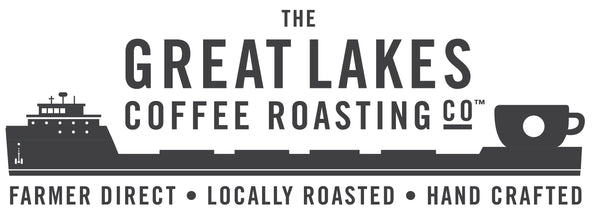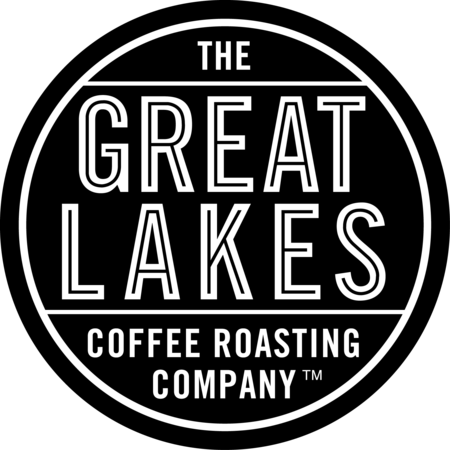Many people assume that coffee is just a generic beverage identified by its' color and low price or endless cup. Once you start examining how coffee is grown, processed, shipped, roasted and served, it becomes apparent what an affordable luxury it really is. In part one of this blog series about coffee costs we will cover the costs at origin where coffee is grown.
 Coffee grows in remote, high-elevation sites in the neighborhood of the equator between the tropics of cancer and capricorn. Often it takes a plane, van, pickup, and a horse and a hike to get there. The average coffee tree produces an annual yield of one pound of roasted coffee. It takes about 4,000 hand-picked green coffee beans to make a pound of coffee. The average per capita coffee consumption in the USA is just over 10 pounds. In Finland, the highest coffee consuming country, it is 27 pounds.
Coffee grows in remote, high-elevation sites in the neighborhood of the equator between the tropics of cancer and capricorn. Often it takes a plane, van, pickup, and a horse and a hike to get there. The average coffee tree produces an annual yield of one pound of roasted coffee. It takes about 4,000 hand-picked green coffee beans to make a pound of coffee. The average per capita coffee consumption in the USA is just over 10 pounds. In Finland, the highest coffee consuming country, it is 27 pounds.

Coffee production forecasts for the current year 2017/2018 are 159 million bags at 132 pounds apiece. That's 20 billion 988 million pounds and the same number of trees.
So, the labor required to propagate, care for and pick beans from the trees is astounding. In some countries like Brazil, there is a minimum wage requirement. In others it is hourly or by weight. As the vast majority of coffee is commodity grade, many pickers are not getting paid very much. We prefer to buy from coffee farmers who pay the pickers a fair wage. To ensure that the pickers are picking the best coffee cherries, they are paid a bonus on top of the weight or wage payment. The wages for better selection go up because it takes longer to only select ripe cherries.
Once the picking is done, the processing begins. Quality decisions must be made. Some growers will triage or sort the coffee picked by hand to make sure they only process the best cherries. Washed coffees get depulped, fermented for up to 24 hours, washed multiple times and set out to dry for up to 30 days. If there are not enough drying areas, the farmer will have to sell the cherries without processing for significantly less than dried coffee or parchment. Once the coffee is dried it may be sold to a mill where more quality decisions are made and the coffee loses about 30% of its' weight before being exported. The better the milling process, the higher quality the coffee, the higher the price.
There is typically an exporter from the country of origin. They are responsible for collecting the coffees, arranging the milling of the coffee, handling the shipping and export documents. Their greatest value is maintaining farmer relationships and building new ones. This requires extensive travel. They are in contact with the importing partner and us, as roaster, to work out what the quality of the coffee needs to be.
In the world of specialty coffee which is all that we buy, coffee is divided between container lots and micro lots. They are different in volume and in cup score or quality. The container lots are based off the commodity (c-market) price of coffee plus a country differential. So if the c-market price is $1.50 and the differential is $1.50 then the price of the coffee prior to shipping is $3 a pound.
Differential is determined by the coffee exporter, the importer, the farm, or the country of origin, and is based on the quantity and quality available, in the long and short term. Even and especially weather can affect the c-market price. Rain in Brazil? Price goes down. Drought in Brazil?
Price goes up. We will often buy coffee futures which insulate us against wild swings and that is why the current price increase is our first in over 6 years. Microlot coffees are smaller lots which score higher (86+) on the 100 point scale. The price is determined by the score and a negotiation between the exporter and importer. Often the importer is negotiating multiple quality levels at different prices simultaneously. All of this complexity and these costs take place before we even see the beans.

We travel to origin with the importer and cup the coffees extensively and visit the farms to determine our annual needs. The importer also handles the freight, import fees and warehouses the coffee which is a carrying cost paid by roasters for storage. The exporters we use are also training many farmers to improve coffee from year to year. The exporter and importer will host Best Cup coffee auctions at origin and we have participated in both Brazil and Colombia. The exporter collects samples of coffees from farmers in a certain area and selects the best 30 or so. In Brazil there were over 700 samples submitted. We travel down and pick our favorite 10-15 and bid against other roasters at a live auction. The top lot of Brazil went for $34 a pound. The auction introduces extra money into the coffee community and creates a path for farmers, who tend to be very tradition bound, to try to improve the quality of their coffee.
The top lot paid the farmer $20,000 more than he would have gotten for his 10 bag lot. The exporter fee is typically between 7-20 % of the cost of the coffee and the importer fee is about 11%. The rest goes to the farmer. So the farmer gets most of the money but is subject to the whim of the commodity market for coffee as well as the relationships that are a part of the business of coffee trading. Part two will cover the commodity market and what goes into roasting the coffee that you are drinking as you read this blog post.

We pay to store beans in a warehouse until we are ready for them. We never buy more than a 6 month supply to keep the beans as fresh as possible. We take deliveries every two weeks. We pay for shipping of the beans from the warehouse to the roastery. We have an equipment investment to roast, analyze and package the coffee. We have three people roasting, two technicians, office staff, accountants, sales staff, trainers and we operate our own coffee bars. In the roasting process, 25% of the weight of coffee evaporates.
We buy the best packaging to ensure the freshness of the beans we are roasting. Even once it gets to the café or the grocery store there may be additional waste in adjusting grinders so the coffee tastes good. It is truly remarkable that coffee can taste good at all given all the steps it takes to get it from seed to cup. The idea that we only have to pay a few dollars a cup to enjoy it in its fullness is the fulfillment of our dream.
On the other hand, if you buy cheap coffee, the cheapness extends all the way down to the pickers who are working in grueling conditions picking on steep slopes oftentimes in the rain. If there isn't enough in the price of a pound of coffee, the pickers aren't getting paid enough to get by. We only buy coffee from people who are treated fairly and that is why we go to great length to seek and provide transparency in our supply chain.
Our commitment for over 20 years has been to bring you the best coffees we can find at fair prices where every link in the supply chain is a valued relationship.


